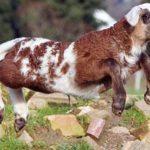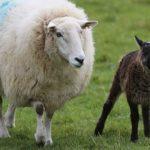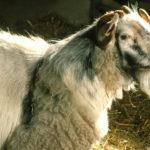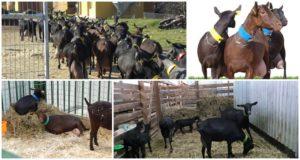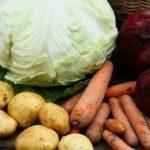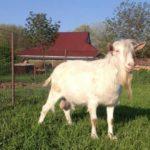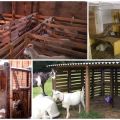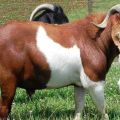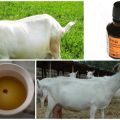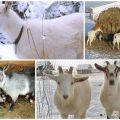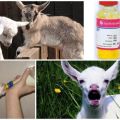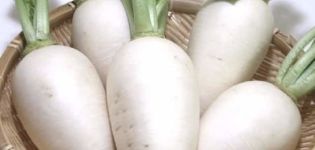Description and characteristics of a hybrid of a goat and a sheep, features of the content
Joint breeding and keeping on farms, in private households of sheep and goats sometimes turns into interspecific crossing. Sheep and goat hybrids show signs of both parents. But, due to the genetic discrepancy, they are most often not viable: pregnancy is terminated in the first half of the term. Individuals born for the same reason cannot have offspring.
Who are basles and what do they look like
The word "basly" is derived from "ram" + "goat". The name was invented by a farmer from the Novgorod region, who had 12 sheep goats: 3 males and 9 females. They looked more like sheep, but more massive, with thick and coarse wool, with a spring molt, like goats. In other words, basl is a hybrid or hyp (from the English "geep" - "goat" + "sheep") from the crossing of a goat and a sheep / ram and a goat when kept together. Hybrid offspring are most often not viable and die before lambing or a few hours after birth. The surviving individuals are sterile and unable to produce offspring, although males have a high libido.
The reason for the incompatibility is the differences in the genetic code: in rams it contains 54 chromosomes, in goats - 60. The surviving hyps had 57 chromosomes. The ram / goat cross was more viable than the goat and sheep. Offspring from accidental crossing were recorded:
- in New Zealand;
- Botswana;
- Ireland;
- France;
- USA;
- Russia;
- Germany.
The most tenacious was the New Zealand hyp. It bore signs of both species and was 30 kilograms (93 kilograms) heavier than a normal ram. At 10 months old, basle was castrated due to constant violence against sheep and goats, despite the absence of estrus.
Hybrid individuals are also obtained artificially by implanting goat eggs fertilized with ram sperm in a test tube with a partially deleted goat genome. Similar studies are being carried out to determine the possibility of reviving extinct species.
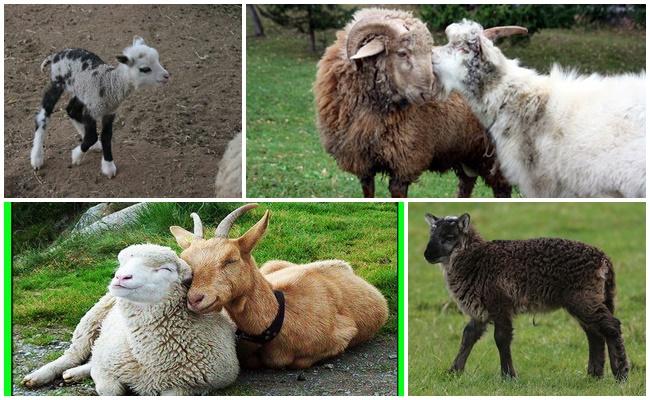
These are called chimeras. Unlike hybrids, they have 4 parents. Several successful experiments ended with the appearance of a goat and a kid. The chimera, which outwardly resembled a goat, had blood proteins similar to those of a sheep, the skin consisted of pieces of goat and sheep skin and fur. The goat died a day later, the cause of death was not established.
Description and characteristics
Basles have high goat legs and a massive ram body. The coat is thick, coarse, but with a soft undercoat. The tail is drooping, like a sheep's. Males have small horns, bent back, no beard. Female gypsum-like muzzles are similar to sheep.
Cubs are born with horns, which is why the goat may refuse to accept them for feeding as alien.
Hypas have the herd instinct of goats and sheep. Males and females are sterile, but males have increased libido, as a result of which they have to be castrated.
Main positive and negative aspects
Basle meat has a unique flavor, different from sheep and goat.
Maintenance and care
Sheep and goats are related animals, which in temperate climatic latitudes are most suitable for a stall-pasture regime. In warm weather, it provides for free grazing in the daytime with an overnight stay under a canopy in a corral or indoors. In the autumn-winter period, when there is no green food on the pasture, the animals are kept indoors with a daily walk in the enclosure (the duration depends on the air temperature).
For basles, the principles of maintenance and care are similar. Animals need shelter from the rain. Wet wool falls off, gets dirty, it will need to be cut. When housing stalls, it is required to provide a floor of straw or sawdust so that the gypsum does not get cold through the hooves. Goats do not feel discomfort at temperatures up to +5 degrees, therefore they do not need additional heating of the room. The main requirements are dry air, good ventilation and lighting.
Basles do not tolerate damp and polluted air. The manure is removed daily. The room should have wooden decks for animals to rest and sleep. Feeders and drinkers are installed at a height of 30 to 50 centimeters above floor level and kept clean.
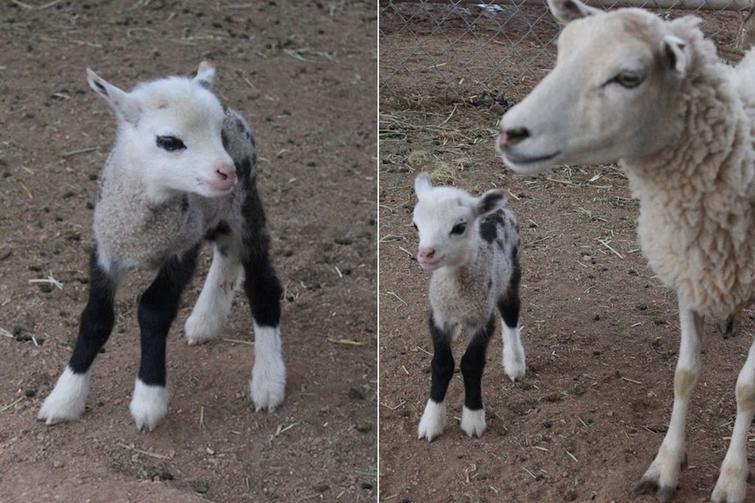
How to feed hybrids
Hyp is unpretentious in the stern, like his parents. In the summertime, the bulk of the food is green matter in the pasture. With a meager grass stand, basls should be fed with hay 2 times a day: in the morning and in the evening. Taking into account the fact that gypsum grow faster than kids and lambs, they need 30% more feed. The increased need for food is also explained by the presence of thick wool in animals. The thicker the fur of a goat or sheep, the more nutrients are spent on its formation. Basles have the same coat as rams, so they constantly need more feed.
When kept in stalls, the diet of ovzecosis includes:
- hay;
- corn;
- vegetables;
- branch feed;
- lick salt.
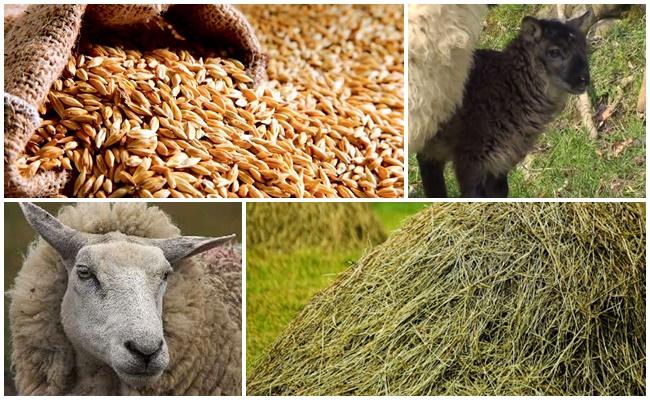
In winter, the feeding regime for the Hypus is the same as for the rest of the sheep / goat herd.
The daily diet is divided into 3 parts:
- in the morning they give coarse and juicy feed;
- at lunchtime (after drinking) - the daily dose of concentrates;
- in the evening - roughage.
The minimum norm of leguminous-cereal hay per day for basle is 3 kilograms. You can mix oatmeal, millet chaff, chopped straw into hay. Before being added to the feed, they are soaked in water, steamed, chopped vegetables and concentrates are added. The daily dose should not exceed 1.5 kilograms.
The composition of juicy feed includes:
- pumpkin;
- beet;
- potatoes (raw or boiled);
- turnip;
- swede.
1 head is given daily up to 1 kilogram of vegetable mixture.
Concentrated feeds in a hybrid diet include:
- corn;
- compound feed;
- sunflower cake.
Grain concentrates are oats, corn, barley. An adult basl is given up to 1 kilogram of grain per day. For a growing animal, oats are the most beneficial (up to 300 grams per day). Mineral feeding (salt, cobalt, copper) - from 10 to 15 grams per day for an adult animal, for a baby - 2 times less.In winter, water is given 2 times a day. Branch feed should be available at all times.
Breeding subtleties
To obtain a hybrid offspring, a ram and a goat are left in the same pen when the goat begins the hunting period... For goats, this is September-October. In the vast majority of cases, pregnancy in goats terminates spontaneously at 3 months. After an abortion, the goat skips lactation until the next birth.
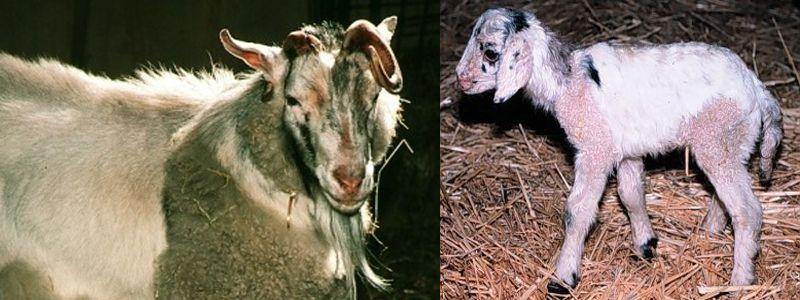
Mature basles are fed in two ways:
- goat's milk without taking it away from the mother;
- milk formula for kids or cow's milk.
What diseases are prone to
According to available information, basles are not susceptible to diseases in sheep and goats, as they have good natural immunity.
Can a ram cover a goat?
With a joint keeping between a ram and a goat, mutual interest and mating is possible.

